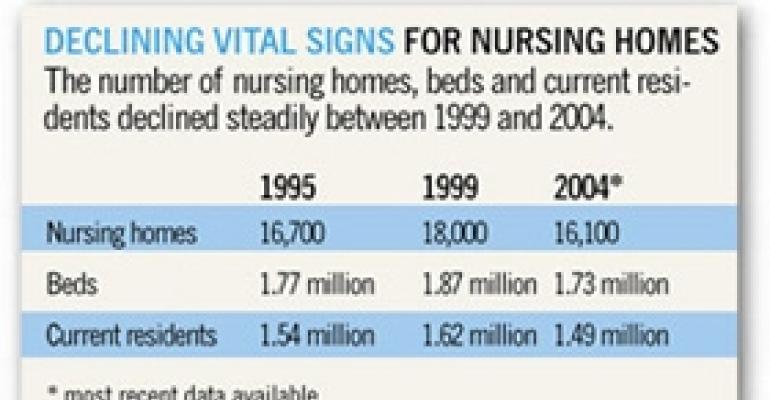
Who will pay the cost of long-term care for millions of aging baby boomers? And how will that impact seniors housing investors and operators? These questions are at the heart of a new comprehensive analysis released March 18 by the National Investment Center for the Seniors Housing & Care Industry (NIC).
"The NIC Compendium Project: A Guide to Long-Term Care Projection and Simulation Models" compiles the major studies to date on the issue of long-term care financing. The result is a body of knowledge to help policy makers and others determine the best combination of public and private sector funding needed to pay for the nation's growing long-term care needs.
"In a short 20 years from now, our nation's economy will face an enormous challenge," says Robert Kramer, NIC president. "That is, how are we going to pay for the massive number of baby boomers who will move through the long-term care system?"
RTI International, under the direction of Joshua Wiener, a long-term care researcher, conducted The Compendium Project for NIC. "One of the big takeaways is that long-term care will look very different in the future," says Wiener. In particular:
* The need for long-term care will become the norm, with nearly 70% of Americans requiring some form of long-term care before they die;
* The number of people with disabilities will increase substantially;
* The demand for long-term care services will double by 2040;
* The rising price of services will impact expenditures.
* The ability of older people to pay for their own care will improve, with fewer people relying on Medicaid;
* No more than 20% of older people will have private long-term care insurance because of the high cost.
The Compendium Project also points to the limitations of the current projection models for future care needs. For example, the models do not address whether home care and assisted living will be substituted for nursing care. "The current models assume services will grow to meet demand even though there is already a worker shortage," Wiener says.
Funding of long-term care has huge implications for the seniors housing and care industry, according to Anthony Mullen, a researcher and NIC senior fellow, and a partner at Royal Star Properties, a developer in suburban Philadelphia. "Government, other funding sources, operators and consumers need to come together in a formal way to create policy options," he says.
Nursing homes are especially vulnerable, the Compendium Project shows. Past projections had predicted steady growth for nursing homes in the future. But occupied beds have actually declined because of the growth of assisted living and home-based services.
At the same time, private pay residents at nursing homes have declined to 10% from 14% in the last two years. "The number continues to shrink every quarter," says Mullen. "We just don't know where it will bottom. But it has real implications for the profitability of nursing homes."
Fewer private-pay residents coupled with a weak economy and worker shortages could lead to a wave of nursing home closures in the next five years, Mullen notes. "Most nursing homes will need a new strategy to remain profitable."
Demand for home care, assisted living and dementia care should continue to grow, the research indicates, though the industry is subject to recession risks and the housing downturn. "If your project is well located and offers the right services, operators can make a return on their investment," Mullen says.
NIC's Kramer cautions investors not to get ahead of themselves, though. He points out that the huge demand from baby boomers for elder care services and housing is still 20 to 30 years off. Still, boomers are having an impact today, Kramer adds. Boomers searching for a place for their parents are demanding more types of services and home-like residential options. "Consumers want choice, and that is driven by the boomers."

